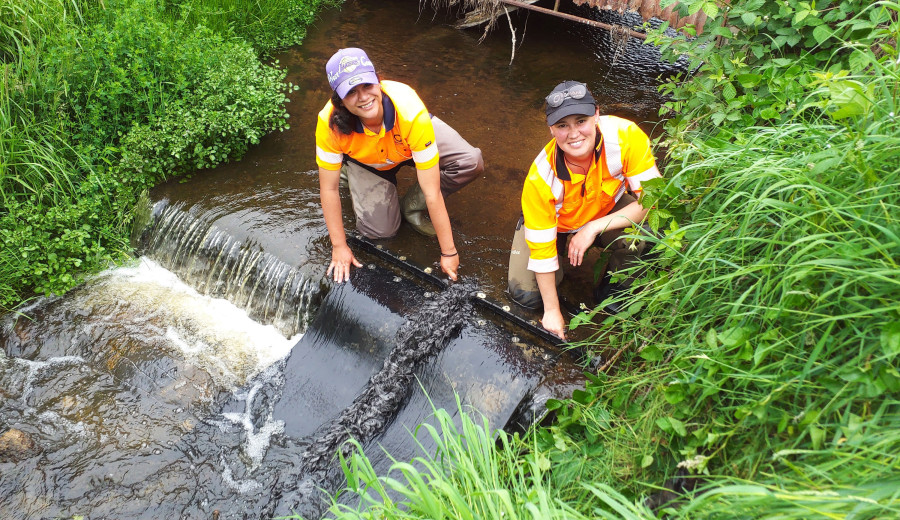Fish Passage
In New Zealand many native fish species, organisms and aquatic invertebrates travel within waterways, with some journeying to and from the sea to complete their life cycles.
Instream structures, including culverts, dams, and weirs, that are not designed, positioned, or maintained correctly, often obstruct these migrations resulting in reduced populations of native fish and organisms, or complete exclusion from our waterways.
In 2021, Kūmānu Environmental was awarded a contract with Tasman District Council, under the Ministry for the Environments Jobs for Nature/Mahi mō te Taiao scheme to seek out, assess and remediate any instream structures that pose a barrier to fish.
The Kūmānu fish passage team are trying to enlarge available habitat by fitting materials to structures to assist fish movement through structures or any fast-moving water created by structures. Rubber aprons, mussel spat rope and flexible baffles are most commonly used to assist the fish on their journey. To-date, the team have assessed over 2,500 of these structures in the Tasman region and have remediated to allow fish passage to over 500, working effectively with a range of landowners, across both urban and rural environments.
Services
- Locate all potential instream structures using ESRI’s ArcPro GIS software and aerial imagery.
- Utilise Field Maps app to locate, identify, store and display data.
- Assess structures and remediate fish barriers to allow for fish passage.
Additional Services
- Fish salvage – safe relocation of fish while physical works are carried out in rivers and streams, such as gravel extraction and maintenance. Includes data recording and fish identification.
- Electrofishing services for salvage and survey.
- Stream habitat assessments for monitoring or consents
- Instream remediation following works – type of remediation and placement, riparian planting, maintenance, and reassessment.
Contact
Keith Nolan - Ecologist / Team Leader Fish Passage

Ellie and Reann, part of the fish passage team, fitting rubber aprons to allow fish to pass through more easily.







